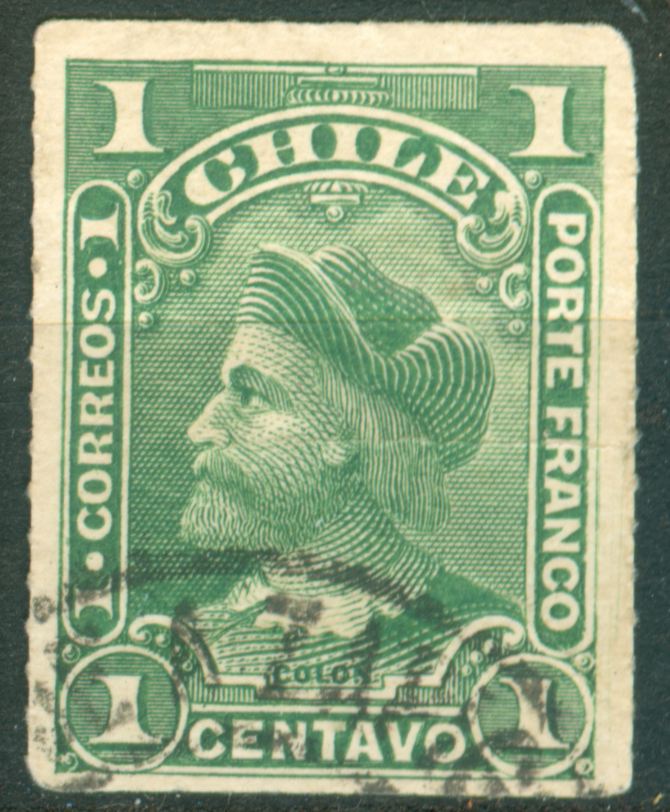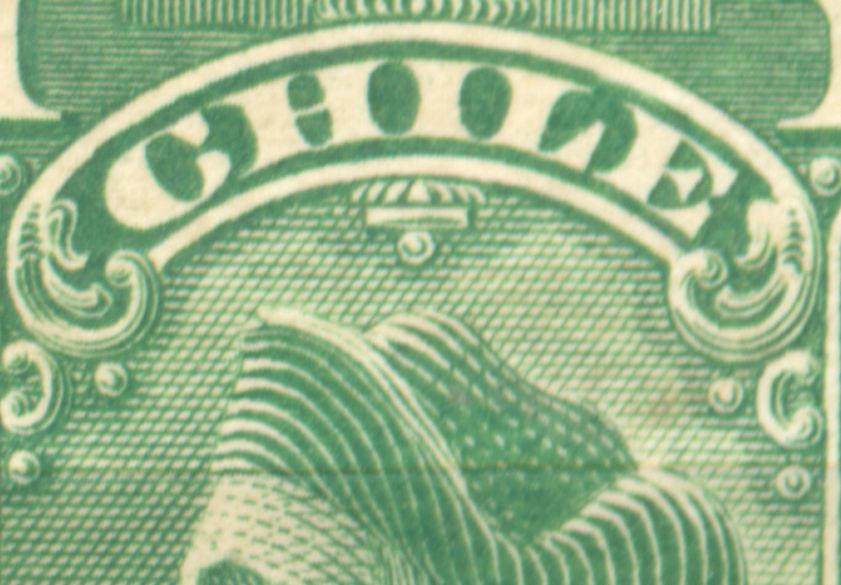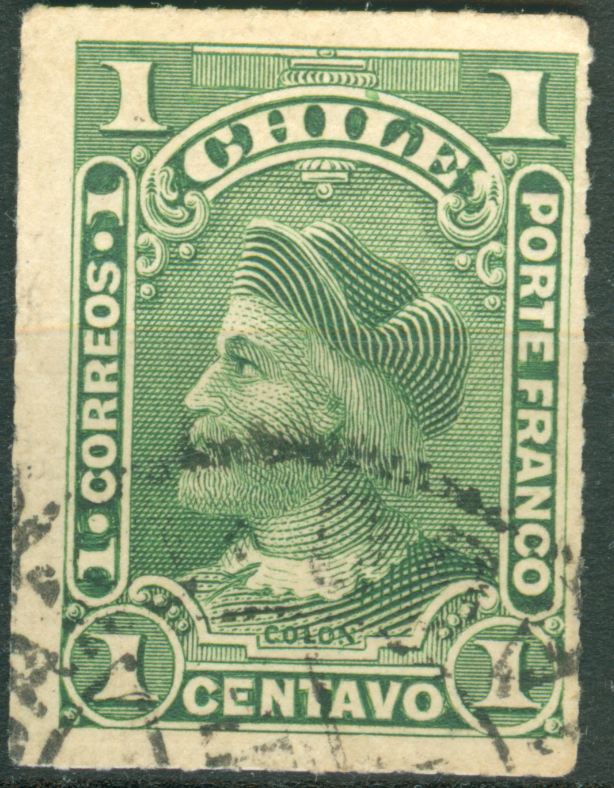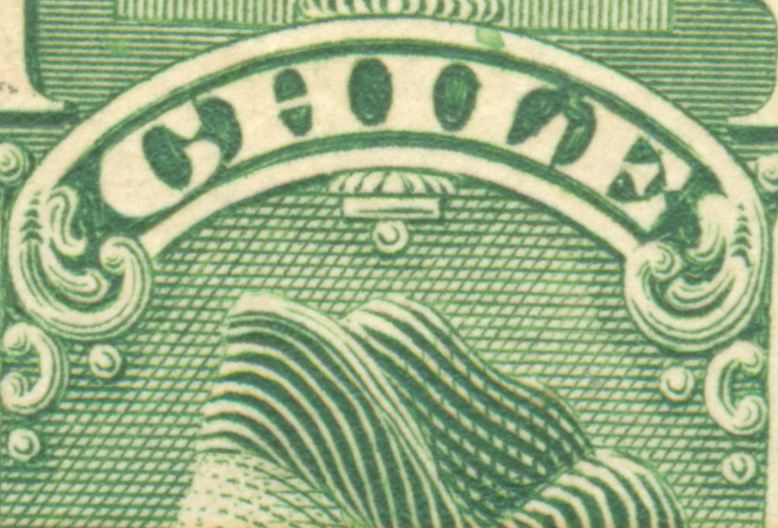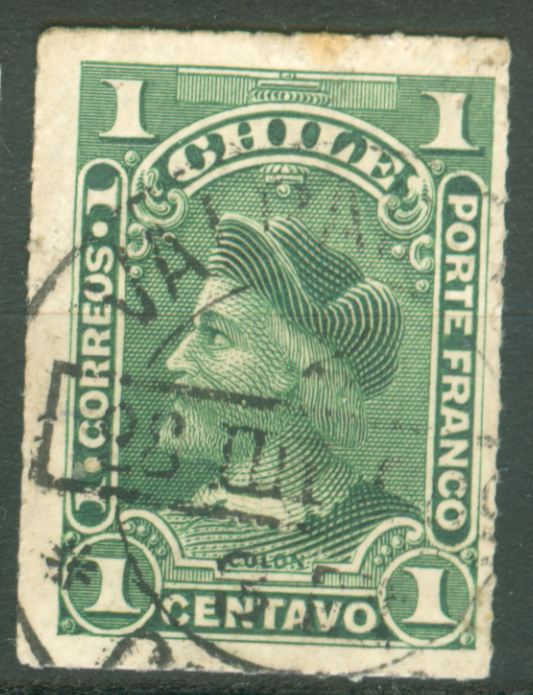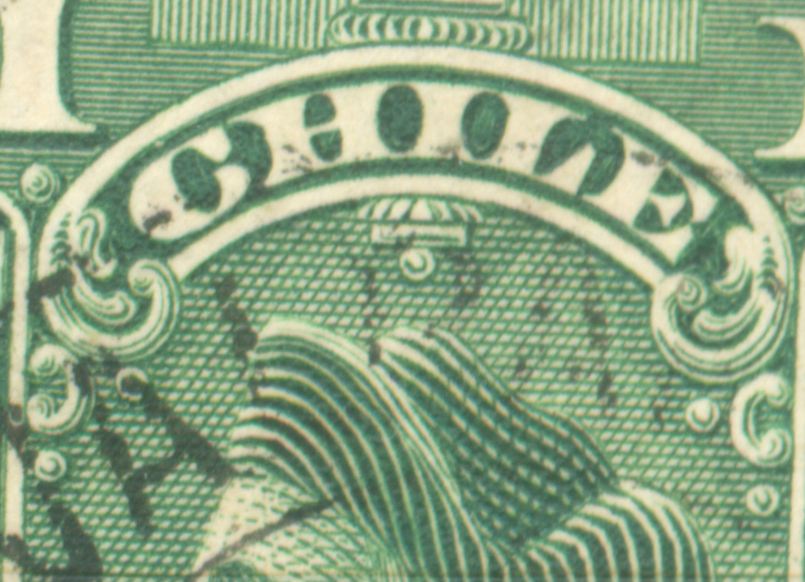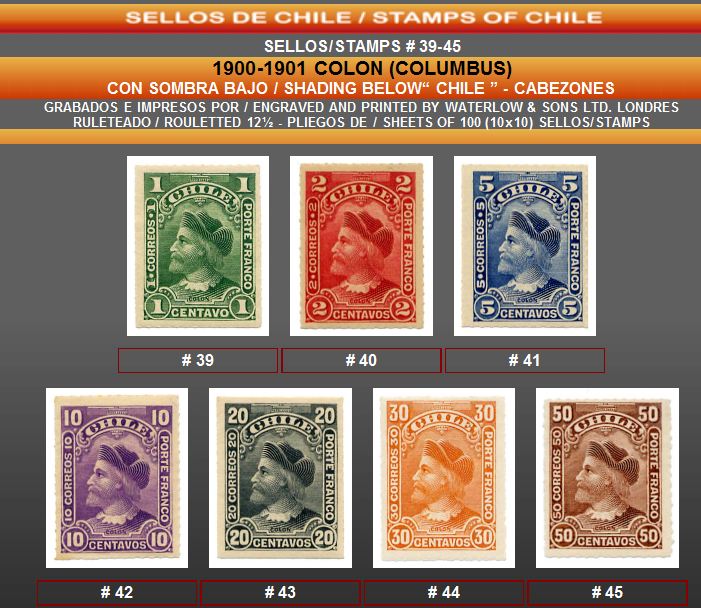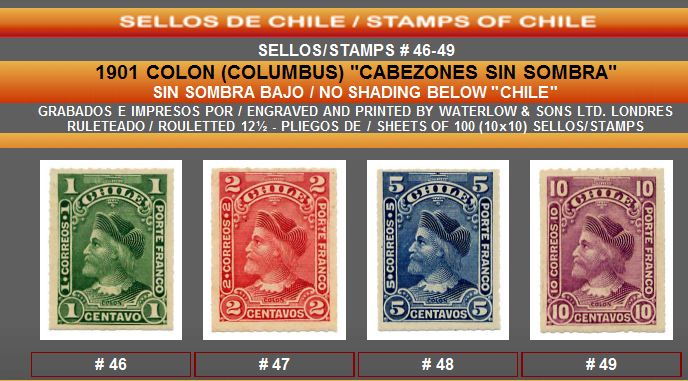Hello
zzzzCabx2.jpg
WATERLOW - 1900-1901
The stamps (engraved by Herbert Bourne) were printed in England by Waterlow & Sons.
In 1901 (1,2,5 and 10 cts.) was changed (re-engraved) the background and the shadow under word "Chile" was modified.
The paper has a sharp mesh of clear dots (grené-granulado) parallel to the axis (eje de enrollamiento).
The stamps that I have: 90% are printed on paper with vertical axis and 10% in horizontal.
At the same time, Waterlow also send stamps for telegraphs and fiscals (revenues). Also postal stationery (postcards and envelopes).
zzzz.waterlow.Pap3.JPG
1923 - CONFERENCIA SANITARIA PANAMERICANA
These stamps were printed in Chile by Imprenta Fiscal (Gov.Printer in those years), but the die was made in England by MacDonald & Co.
They produced the image of building (Congreso Nacional) for recess printing.
Stamps were printed in offset-litho (one color) and offset-litho + recess (frame in color and black center).
Was used one of the papers that in those years were used for local printings of Presidente stamps : from the firm A.M.Peebles & Sons (England), that is thick and with noticeable "granulado" (grené/porous)
I was comparing both papers (1900 and 1923) and I'm agree with you: I think that they are very similar, maybe the same paper.
Best regards
